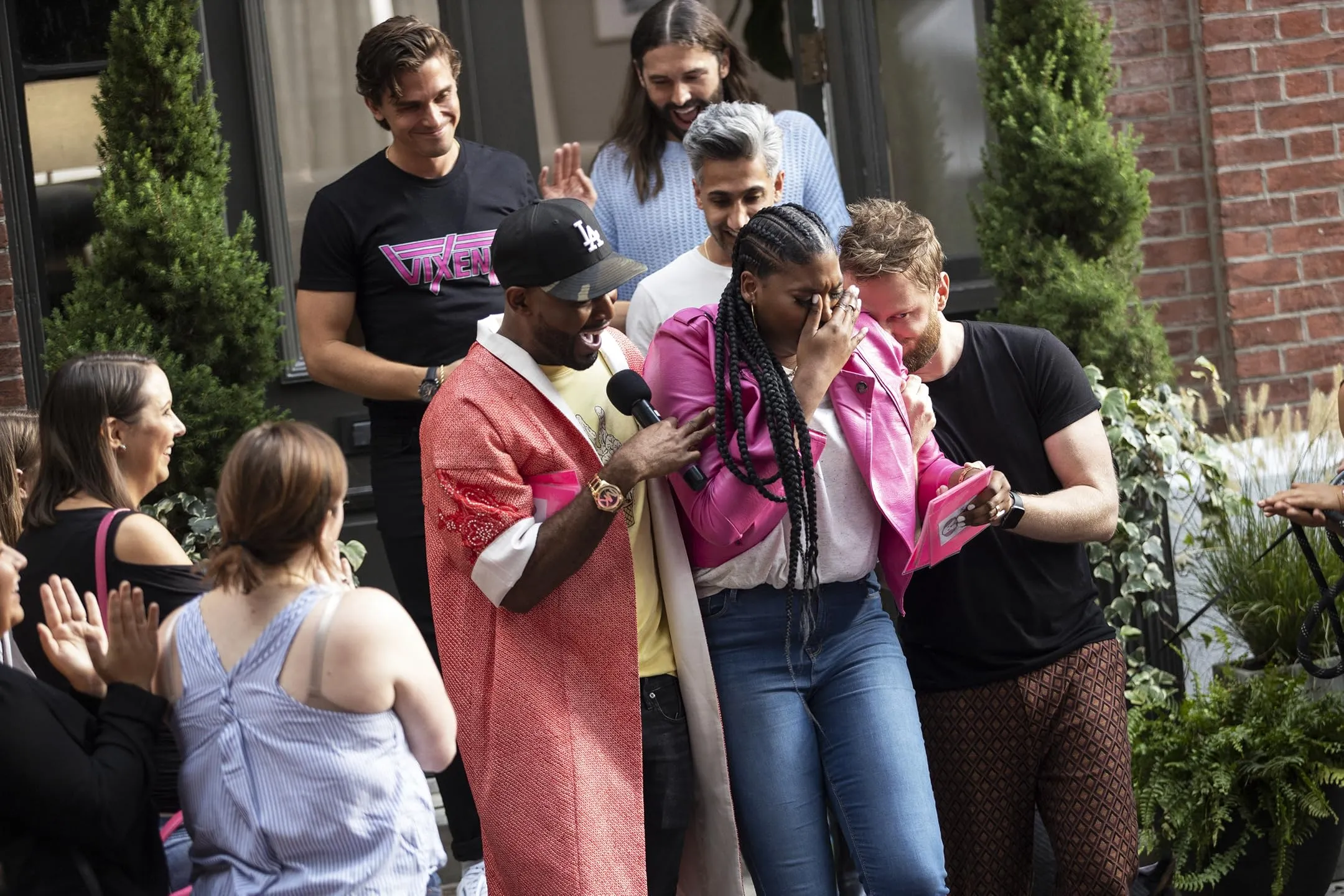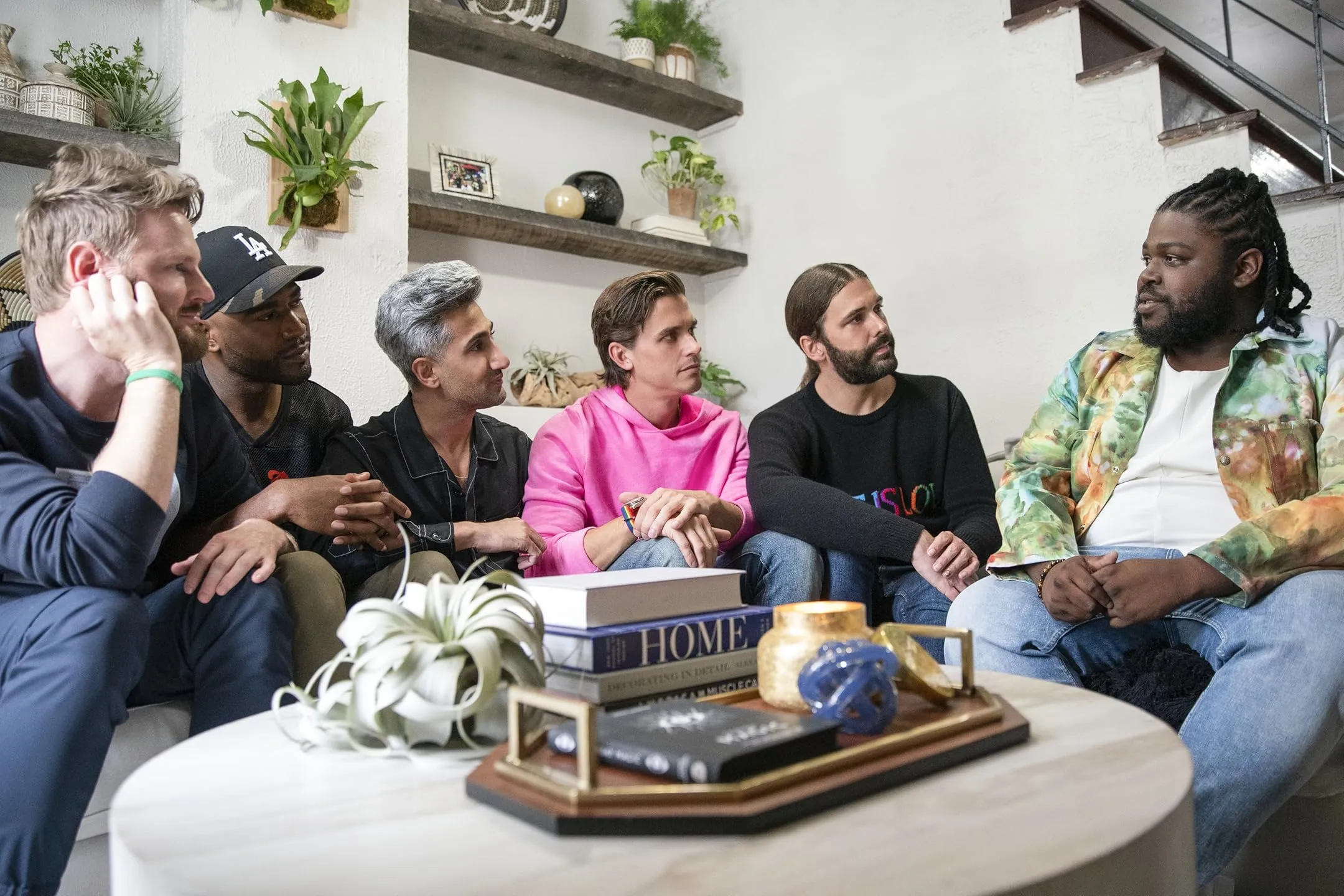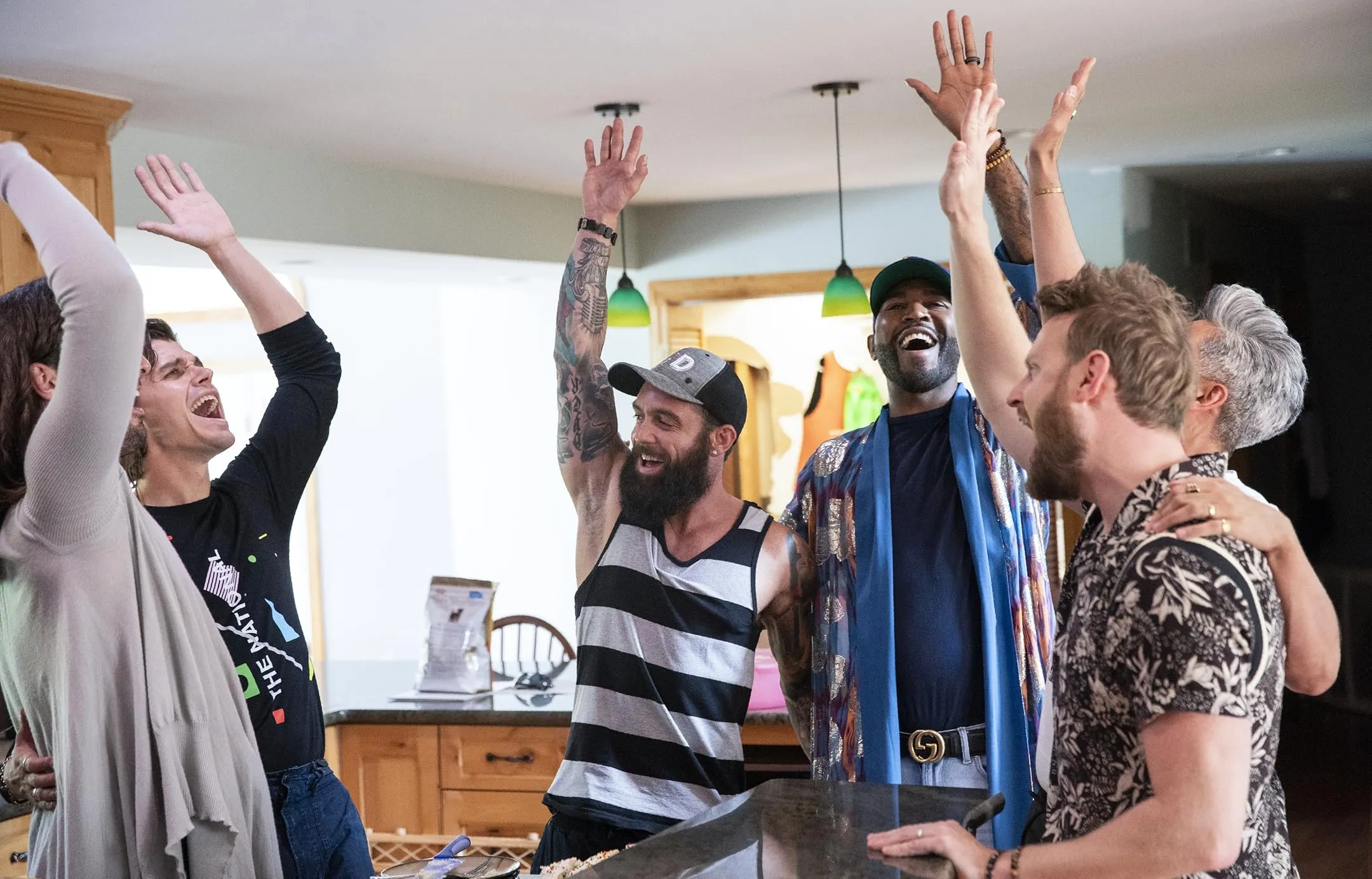“Queer Eye,” the beloved makeover program that has captivated audiences since its comeback in 2018, returns for its ninth season with an exciting twist: this time, the Fab Five focus on the bright, pulsating core of Las Vegas.
The Fab Five (Karamo, Antoni, Jonathan, Tan, and newcomer Jeremiah Brent) provide their knowledge to individuals seeking life changes, with each episode blending heartfelt transformations with humor and style. This season is also noteworthy since it throws Brent into the mix, smoothly blending the group’s established chemistry, which has become the show’s trademark.
Las Vegas serves as a backdrop and a character in and of itself, reflecting the themes of aspiration and reinvention that recur throughout the season. The city’s renowned buildings and vibrant ambiance emphasize personal stories of struggle and accomplishment, creating a rich tapestry that underscores the show’s objective to spotlight individuals who frequently work behind the scenes.
The histories of showgirls and casino employees unfold against a backdrop of neon lights and cultural spectacle, making Season 9 a celebration of individual transformations and the collective spirit that distinguishes Sin City. This setting complements the show’s study of identity and belonging, enabling viewers to reflect on their own ambitions against the backdrop of a city famed for its vibrant, yet often neglected storylines.
The Fab Five: Returning and New Members
As “Queer Eye” prepares for its ninth season, viewers are met by familiar faces from the Fab Five: Karamo Brown, Antoni Porowski, Jonathan Van Ness, and Tan France. Karamo’s sympathetic coaching, Antoni’s culinary innovation, Jonathan’s flamboyant grooming instructions, and Tan’s faultless fashion advice all contribute to the ensemble’s distinct character.
Together, they create a cozy and energizing dynamic, much like a well-composed jazz tune in which each instrument complements the others while preserving its own identity. This season, they continue to empower their “heroes” by attacking deeper emotional and psychological hurdles through meaningful adjustments that extend beyond the surface.
Jeremiah Brent, the new design specialist, steps into Bobby Berk’s shoes. Brent, known for his charismatic appearance and creative expertise, fits in perfectly with the group, giving a new perspective while respecting the present dynamics.
His background in reality television and interior design enables him to enhance their heroes’ physical spaces and bring a sophisticated understanding of personal style and aesthetics. Brent’s inclusion invigorates the Fab Five’s dynamic, as he interacts with his fellow experts and the heroes in collaborative and helpful ways.
What stands out about this season is how Brent’s presence alters the group dynamic. While the original four perform admirably in their roles, Brent’s collaborative spirit adds warmth and connection, deepening the show’s emotional impact.
His encounters are characterized by genuine interest, which allows him to elicit stories from their heroes that resonate with viewers. This blend of characters provides a richer narrative tapestry, reminding us that transformation is about fostering relationships and establishing community as much as change. The Fab Five embody this spirit, making each episode celebrate individuality and shared humanity at a time when connection feels more important than ever.
Themes and Messages of Season 9
At the heart of “Queer Eye” Season 9 is a profound investigation of transformation and atonement, capturing the heroes’ journeys against the sparkling backdrop of Las Vegas. Each episode delves into the rich lives of people who have overcome misfortune, whether a retired showgirl rediscovering her passion or a single mother looking for security for her family.
The Fab Five serve as change catalysts, assisting these heroes in reclaiming their identities with a blend of emotional support and practical assistance. More than ever, this season highlights the importance of vulnerability and self-acceptance, demonstrating that true transformation frequently begins with accepting one’s past.
The notion of community and connection runs deep throughout the Sea Son, showcasing how the Fab Five foster a sense of connection among their heroes. Each story focuses on the often-overlooked support systems of friends, family, and colleagues who play important roles in the heroes’ lives.
The play depicts various backgrounds, from casino personnel to entertainers, emphasizing that everyone has a story to tell. This celebration of individuality is reminiscent of the French New Wave’s emphasis on character-driven storytelling in which personal stories merge with larger societal themes.
Furthermore, the Fab Five’s interactions with their heroes create true connection moments beyond makeovers. The emotional discoveries and ties made during these transitions serve as a reminder of the power of community in creating lasting change. In an era when isolation can feel overwhelming, this season of “Queer Eye” not only entertains but also serves as a meaningful cultural artifact, reflecting our collective desire for connection and understanding in a fast-changing world.
Episode Highlights and Individual Stories
“Queer Eye” Season 9 gives up a rich tapestry of exceptional episodes, each spotlighting the heroes’ transforming journeys against the vivid backdrop of Las Vegas. One of the more interesting episodes stars Paula, a 63-year-old “forever” showgirl.
Her story is immensely moving, not only as a narrative of personal reinvention but also as a celebration of a life spent in the spotlight. The Fab Five take Paula through a heartfelt makeover, helping her recapture the confidence she once displayed on stage. This episode celebrates the enduring spirit of those who have created the entertainment landscape, reminding viewers that age is no barrier to reinvention.
Another memorable episode is Piff the Magic Dragon, an English magician famed for his whimsical attitude. The Fab Five help him escape his dragon suit and embrace his true self, culminating in a heartfelt engagement proposal. This narrative arc perfectly captures the show’s spirit of vulnerability and self-acceptance as Piff discovers that his identity extends beyond the colorful character he plays.
Clyde, a poker dealer recovering from surgery, provides another perspective on transformation. He changes his style and begins to explore his potential as a podcaster, showcasing the multiple natures of identity and how they can evolve. Then there’s Nicole, a determined mother and pizza delivery driver whose episode emphasizes the importance of family solidarity. A striking moment that underscores the show’s commitment to representation and acceptance is the emotional reunion with her trans son throughout their transformation.
These episodes’ emotional effect is heightened by significant moments that resonate with viewers on a personal level. For example, home reveals—the pinnacle of each hero’s journey—are more than just beautiful transformations; they represent newfound hope and self-worth. The interactions between the Fab Five and their heroes foster a sense of intimacy, allowing viewers to experience genuine moments of vulnerability and delight.
Guest appearances throughout the season add greatly to the emotional weight. Celebrities like Dita Von Teese and Chef Bobby Flay have celebrity power and embody the spirit of giving back to the community. Their participation emphasizes that transformation is a collaborative effort, urging viewers to engage with their communities.
In many ways, Season 9 of “Queer Eye” serves as a cultural artifact, reflecting larger societal developments toward inclusivity and self-acceptance. Each episode’s emphasis on individual tales not only entertains but also pushes viewers to embrace their personal, communal, or otherwise transformations. This blend of heartfelt storytelling and emotional depth enhances the series, making it a must-see for anybody looking for connection and hope in today’s complex world.
The Fab Five’s Unique Contributions
Karamo Brown shines out as the Fab Five’s emotional anchor. Drawing on his social work background, he offers sincere counseling that deeply explores the heroes’ personal difficulties. His method is characterized by a blend of empathy and honesty, which pushes people to confront their anxieties and phobias.
In one moving episode, he collaborates with Clyde, a poker dealer navigating recovery from a significant health scare. Karamo’s ability to create a safe environment helps Clyde express his feelings of inadequacy. Through guided conversations, Karamo helps him identify his importance outside his work, fostering a sense of self-empowerment that lasts throughout the transformation process. This emotional counsel is more than just a subplot; it is central to the series’ narrative, emphasizing that true change begins within.
Antoni Porowski introduces a new vitality to the kitchen, transforming cooking segments into celebrations of creativity and personal expression. His culinary style is relatable and inspirational, frequently encouraging heroes to embrace their tastes while tasting new dishes. In one memorable episode, he helps Sara, a mother of three, prepare a family lunch that blends nutrition and comfort.
Antoni encounters hurdles, like introducing unknown materials, but his patient direction elevates cooking from a chore to a pleasurable experience. The effectiveness of these segments lies not only in the delicious dishes made but also in the way they foster connection—both among family members and within the larger context of self-care and sustenance. Like how French New Wave cinema frequently combined personal experiences with bigger societal themes, his parts emphasize the importance of food in cultural identity.
Tan France and Jonathan Van Ness, the dynamic combination, present a fascinating blend of design and grooming knowledge that tremendously impacts their heroes’ self-image. Tan’s fashion advice is founded on inclusivity and practicality, emphasizing the importance of selecting designs that reflect personal identity rather than simply following fads. His ability to modify clothing to specific body types and personalities allows heroes to embrace their individuality. For example, in an episode involving Chris, who has issues self-confidence, Tan’s deliberate outfit choices help him look beautiful and feel good, changing his perspective on self-worth.
Meanwhile, Jonathan’s enthusiasm for grooming extends beyond appearances; it is about inspiring confidence. His contagious zeal inspires heroes to value their appearance and express themselves freely. Jonathan helps a hero embrace her inherent beauty in one particularly emotional sequence, emphasizing that grooming is about more than just appearances.
This interplay of style and grooming is reminiscent of the imaginative narrative found in contemporary cinema, where character development frequently intersects with visual presentation. Tan and Jonathan not only improve their heroes’ appearances, but they also foster a greater appreciation for self-expression, making their contributions vital to the larger narrative of transformation in “Queer Eye.”
The Continued Relevance of Queer Eye
“Queer Eye” Season 9 concludes with an overarching message of hope and transformation, blending personal stories that reflect larger cultural shifts toward son and acceptance.
Each episode strongly reminds viewers that change is possible and frequently results from vulnerability and the bravery to embrace one’s true self. The Fab Five’s caring leadership generates a sense of community, allowing viewers to reflect on their journeys while emphasizing the importance of support networks in personal development.
As we look ahead, the excitement for future seasons is apparent. The Fab Five’s ongoing popularity lies in their uncompromising dedication to their mission: to inspire and empower people from various backgrounds.
Their distinct blend of humor, empathy, and competence continues to break down barriers, fostering a cultural discussion about identity and inclusion. With each season, “Queer Eye” not only entertains but also challenges us to embrace our transitions, making it an important aspect of modern television and a cultural artifact of our time.
The Review
Queer Eye Season 9
Season 9 of "Queer Eye" wonderfully continues the series' heritage of transformative storytelling by merging personal narratives with the vivid energy of Las Vegas. The Fab Five's distinct contributions foster true connections by emphasizing hope, inclusivity, and self-acceptance themes. Each episode entertains and encourages viewers to reflect on their journeys. This season's emotional depth and playful charm reinforce the show's cultural relevance and long-term appeal.
PROS
- Each episode explores profound personal transformations.
- Representation of varied backgrounds and experiences.
- Promotes themes of self-acceptance and community support.
- The Fab Five's chemistry enhances viewer engagement.
- Practical tips that inspire viewers to embrace change.
CONS
- Some episodes may feel predictable in their approach.
- Occasionally lacks depth in addressing systemic problems.
- Risks overshadowing deeper emotional themes with visual transformations.




















































